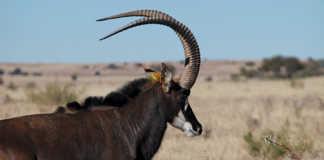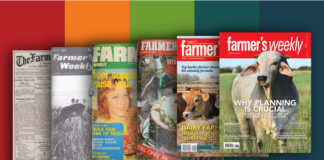
Certain breeds or crossbred animals are not generally viewed as ‘beef animals’. While such cattle can still be grown into slaughter animals, they will not fetch anything close to what is paid for typical beef breeds on the market. This is due to carcass weight, carcass conformation (shape), fat distribution, and other factors.
Some of these breeds may be purebred (lighter frame type) Nguni cattle, dairy breed crosses, or even genetically poor pure beef-type animals. Even a well-bred beef animal that is very thin due to poor nutrition will not fetch a high price.
This is not to say that all farmers keeping Nguni-type cattle should get rid of them! These animals do have benefits if farmed in harsher environments and climates that largely prevent the farming of genuine beef breeds such as Angus and Hereford.
Various options
If you farm in such an area and keep Ngunis or Nguni crosses, it’s probably unwise to farm for the feedlot/weaner calf market, as these markets discriminate against breeds such as Nguni and most of the dairy breeds.
You always have the option, however, of growing your cattle into adult slaughter animals. If fat and heavy enough, these will fetch fair to good prices on the red meat slaughter markets. The only issue with growing oxen out to adults is that this can take a few years, which will affect your cash flow.
However, if you are farming good beef animals to supply the weaner market, you can sell your crop of calves each year at between eight and 10 months of age. This will give you an annual income that will help cover running costs and other expenses.
The problem with farming beef calves in a communal setting is that there are seldom set breeding programmes, and bulls of all breeds often walk permanently with the cows. This means that even a poorly bred Nguni bull can inseminate your good-quality breeding cows, which will later lead to lower-priced calves.
You need to discuss as a community how to keep bulls away from cows so that you can:
breed calves of a similar age; exclude poor-quality bulls from the communal herd; ensure that calves are not born during times of the year when there are grass shortages.
It’s difficult to sell calves of greatly differing ages and sizes to the feedlot market.
Calves of similar appearance generally command better prices.
Weights
Communal farmers don’t always record when calves are born and thus lose track of their ages. This can be a problem, because as soon as calves start to show signs of cutting their first two adult teeth, they are no longer regarded as weaner calves and feedlots will not pay the aforementioned prices.
So, depending on the size and condition of your calves, consider weaning and marketing them at between eight and 10 months of age. You could wean calves as light as 170kg or 180kg, but I wouldn’t wean at a lighter weight than this. Neither would I wait longer than 12 months.
Tattoos and brands
Feedlots will reduce the price if calves are poorly branded (and the law says that they must be marked by six months of age). Rather consider tattooing your calves with your registered mark on the inner ear. Your local farmers’ co-op keeps tattooing equipment and can explain to you how the tattooing is done.
Two-tooth and older cattle must be clearly branded with a branding iron.
To track the ages of your calves, attach an ear tag to each animal within the first or second week of birth and write the date of birth clearly on it.
A final point: feedlots prefer to buy large quantities at a time. If you only have a few calves, join up with other farmers who have calves of a similar age and quality, and sell them together. Feedlot buyers normally look to buy at least 15 to 20 calves at a time.
Shane Brody is involved in an outreach programme aimed at transferring skills to communal farmers.











